
Academic and Research Cooperation (Model)
Taking partnerships seriously! National Taipei University of Technology’s Problem-based Learning Program Facilitates Transnational, Trans-disciplinary and Trans-industrial Integration
Taking partnerships seriously! National Taipei University of Technology’s Problem-based Learning Program Facilitates Transnational, Trans-disciplinary and Trans-industrial Integration
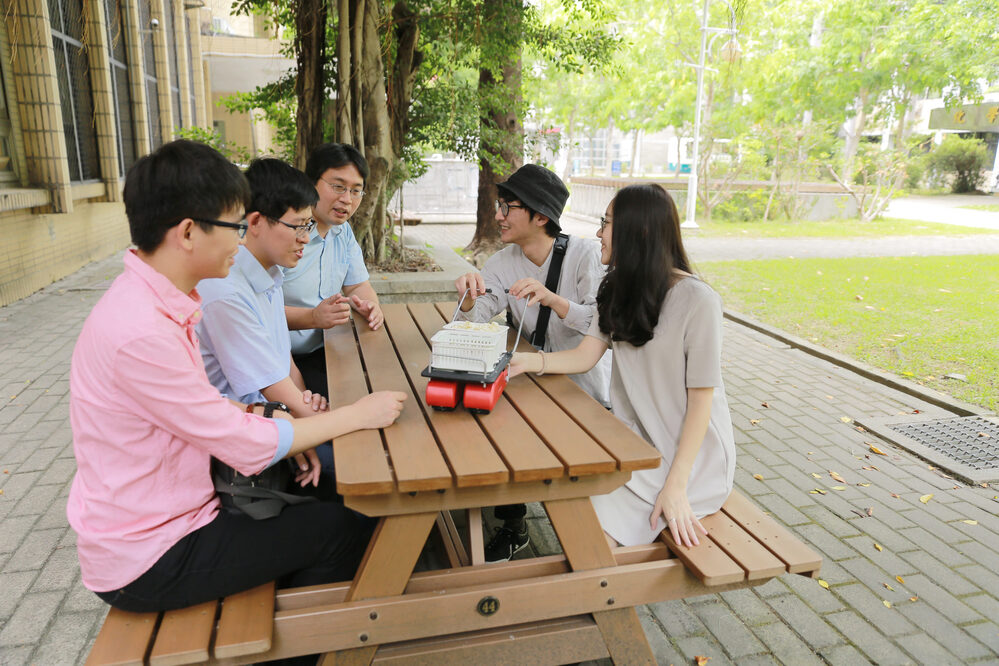
Linking up transnational, trans-disciplinary and trans-industrial cooperation, the Problem-based Learning Program affords students a gateway for learning pluralistic cultures and real-world problem-solving. This program is innovative in terms of form and content, and is closely connected with the local communities.
People avoid the sultry weather of Kyoto in July like the plague. We also crave for a room with air conditioning, only to see a group of young people busy operating mowers under the scorching sun in a suburban farmland.
Looking from a distance, we thought that they are in the middle of farming tasks. Taking a close look, however, we found that the mowers are not moving in a straight line, prompting us to wonder why they deviate gradually. Brow beaded with sweat, these young people are in a flurry, trying to pull the mowers back on the right track, while another group of young onlookers laugh like a drain.
To judge by his deep tan, the old man sitting aside is supposed to be a farmer. He leisurely watches these kids messing around in the field. Obviously, they are not busy with farming activities.
These young people inept at operating farm equipment are students from National Taipei University of Technology (Taipei Tech) and Osaka Institute of Technology (OIT). They gather together in the suburb of Kyoto for the Problem-based Learning Program (hereafter referred to as PBL Program).
Before discussing the PBL Program, we need to know its conception in 2012.
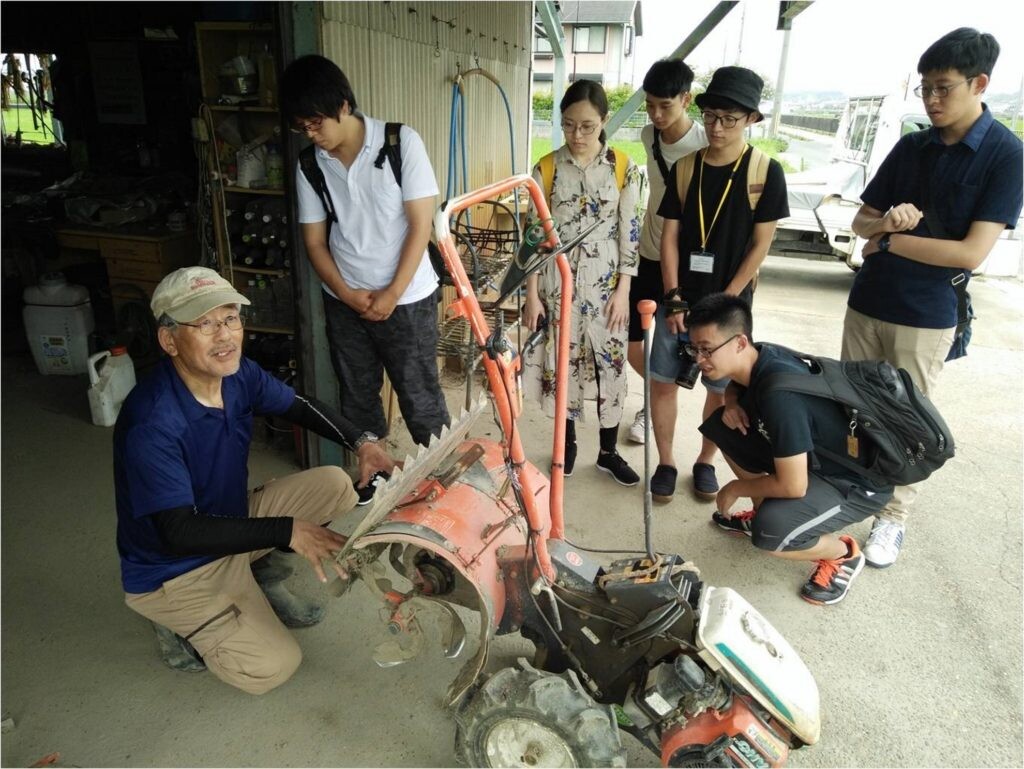
Agricultural Machinery Operation is an integral part of the PBL Program co-organized by Taipei Tech and OIT.
A real test of students’ skills: from automated guided vehicles and bionic robots to agricultural machinery
In the autumn of 2012, Prof. Matsui Kenji from the Department of Robotics, OIT, took the initiative to contact the Mechanical Engineering Department, Taipei Tech, expecting to co-organize the PBL Program with a simple motivation — let students from the two departments compete in the design of automated guided vehicles that can absorb shocks and cross some barriers.
The then-Chair of Mechanical Engineering Department of Taipei Tech asked Ho-Chiao Chuang, who was an assistant professor at the time, to evaluate its feasibility. Having been keen to develop international connections, Prof. Chuang regarded it as a rare opportunity for students who cannot afford to study abroad to exchange with their Japanese counterparts in Taiwan. This transnational and trans-university cooperation was thus launched in 2013.
Prof. Ho-Chiao Chuang, who has just assumed the Dean of International Affairs for 6 months, recounted this piece of history and explained to us that the spirit of the PBL Program lies in proposing a solution to a problem. Accordingly, the most basic rule of the contest was that students didn’t know the subject until it took place, which aims to test students’ skills at problem-solving.
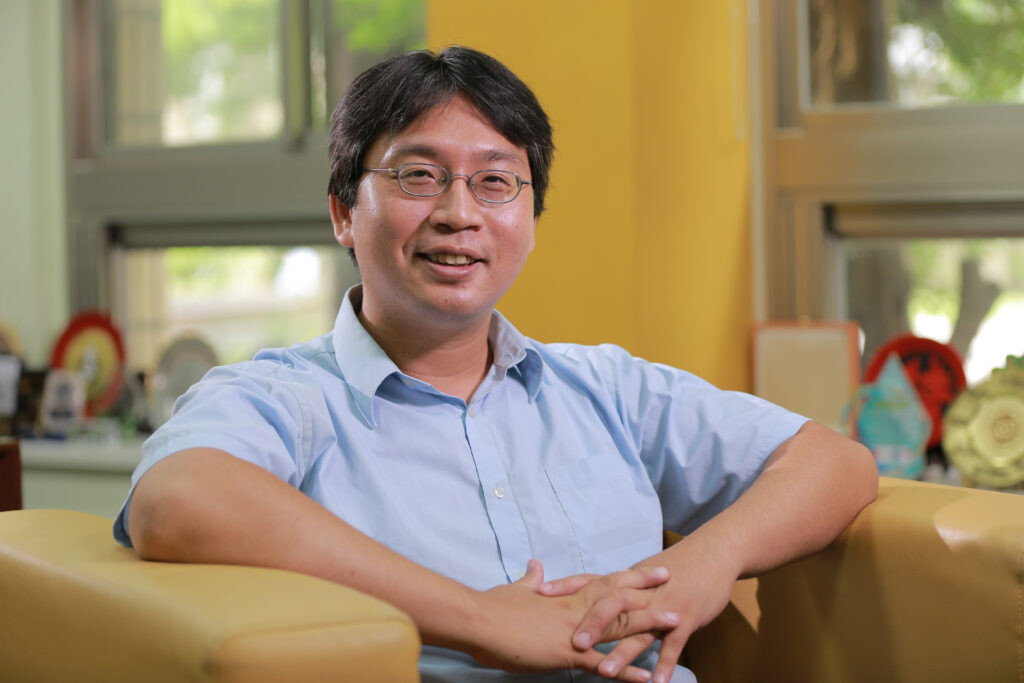
Prof. Ho-Chiao Chuang, Dean of International Affairs, Taipei Tech
The contest of automated guided vehicle design for the first year of the PBL Program seemed to be easy. However, it was actually a tough task for the students to apply their knowledge gained from the university to the vehicle design within just a few days. They were seriously challenged by this thrilling contest.
With the successful experience in 2013, the PBL Program in 2014 opened the contest to all students from the two universities, still with automated guided vehicle as the subject.
Much to the professors’ surprise, the participating students in the second year were fairly familiar with the design of automated guided vehicle. It turned out that the participating students in the first year generously shared their experience to their junior classmates, which allowed the latter to know the potential problems and the solutions in advance.
Learning from their senior classmates’ experience, “they spent plenty of time designing the appearance of the vehicles in order to make it look awesome and gorgeous, which deviated from the norm and spirit of the PBL Program. This shows that teachers have to keep pace with new development and trends by changing the contest subject, otherwise the students would take this program lightly,” Prof. Chuang said.
In the next two years of the PBL Program (i.e. 2015 and 2016), the subject changed from automated guided vehicle crawling on the ground to bionic robot flying in the air. The participating students consequentially couldn’t copy their senior classmates’ experience. Each year’s contest was a brand new challenge. In addition to the contest, the 9-day program required the students to make a short presentation in English about what they’ve learned during the day. “Each student has to give presentation regardless of their level of proficiency in English,” Prof. Chuang accentuated.
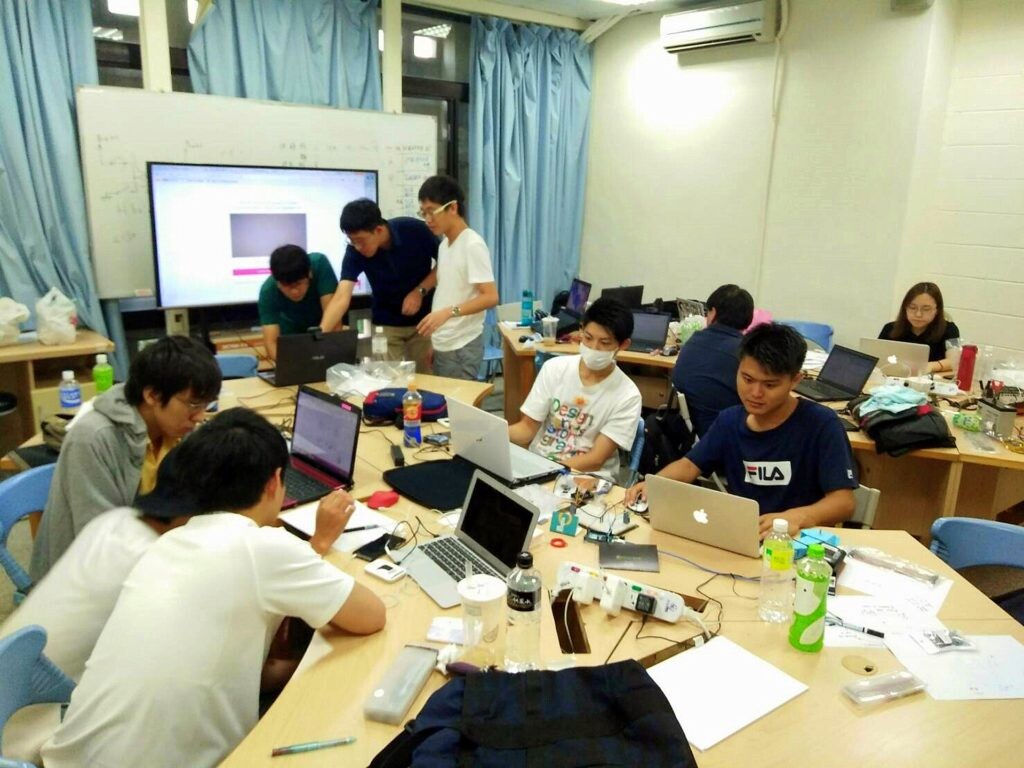
A group photo of the 2013 PBL Program
Communication channeled conflicts to facilitate collaboration. The students impressed the industries with their creativity.
After 4 years of contest, Prof. Kenji, who used to work in and has had a long relationship with the industrial sector, proposed to include industries into the PBL Program. What difference did it make? Prof. Chuang explained that each of the previous contests was academic-oriented and lasted 9 days only. Now the industrial sector’s involvement will re-orientate the PBL Program to real-world problem-solving and extend its implementation to 2 or 3 months. “As far as the companies are concerned, they can fulfill their respective social responsibilities on the one hand, and derive creative ideas of all stripes from the students from different countries on the other, thereby recruiting international talents.”
The first PBL Program that included the industrial sector was launched in 2017. Its point of departure was the requirement of a long-standing agricultural machinery manufacturer in Japan who asked them to develop an “automated tracking machine” that could relieve farmers’ burden of operation. As mentioned at the beginning, the students who were occupied with operating mowers are the participants of the PBL Program.
Taipei Tech sent students from the departments of mechanical engineering and industrial design to the program. Chen-An Ho from the Industrial Design Department told us that she didn’t understand the difficulties of farming until she operated a mower personally because she needed to bend down throughout the process. “Since I major in human factors and ergonomics, I know intuitively the occupational injuries of farmers when I see them working in the field.” This observation, along with her interviews with farmers, was logically integrated into her design thinking.
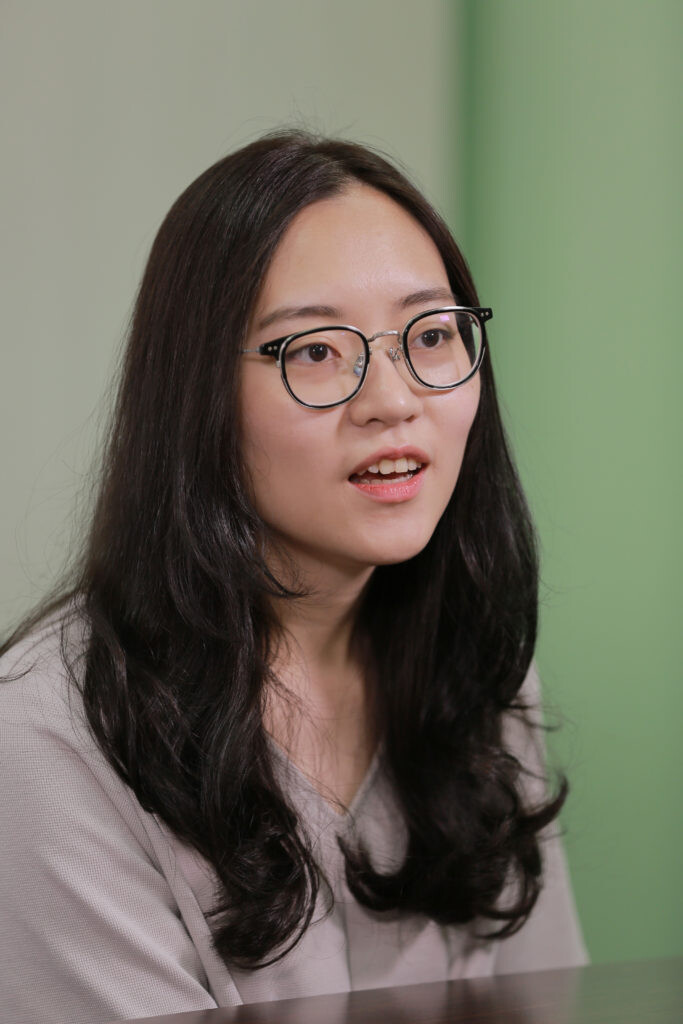
Chen-An Ho
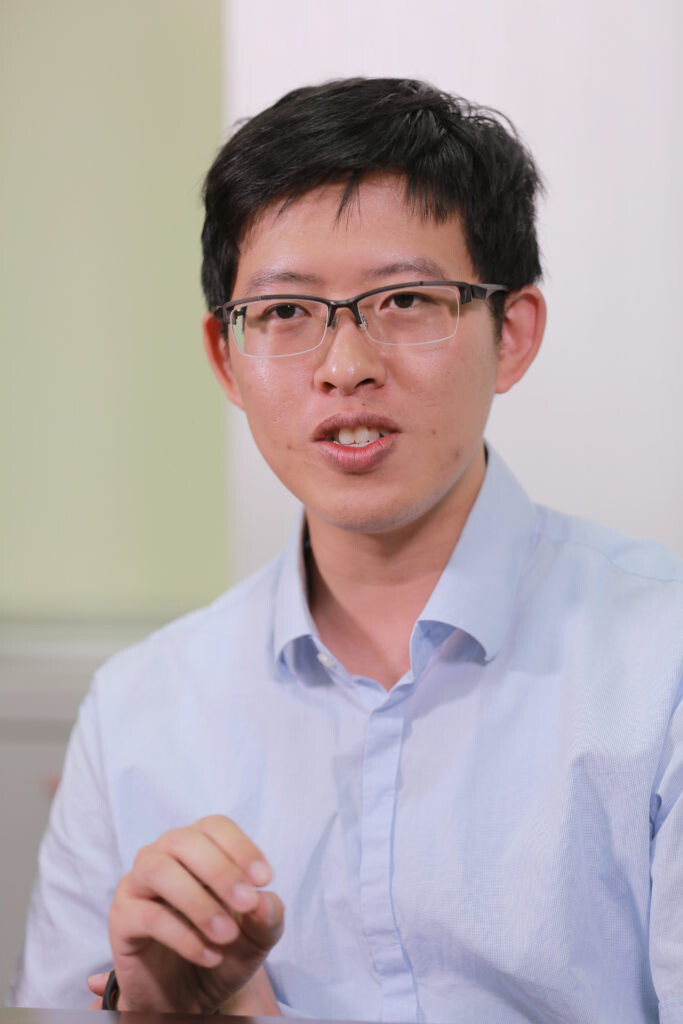
Jeng-Wei Huang
Jeng-Wei Huang from the Mechanical Engineering Department argued that students with a background in mechanical engineering set great store by the final product regardless of the outcome of discussions. “That’s why I always regard discussions unnecessary. Since we have a tight schedule to keep, I prefer solving problems in the most efficient way to complicating the solution.”
The students from the Industrial Design Department specialize in design thinking and taking human factors into account during their product development, while those from the Mechanical Engineering Department are good at implementing design concepts and making power and labor saving. Unfortunately, the distinguishing features of the two departments instead provoked the most fundamental conflict in the Taiwanese PBL Program team.
The two divergent modes of thinking in the Taiwan team caused subtle tension from the very beginning of the program, which even induced the coordination by their Japanese counterparts. After a 3-month adjustment period, the team members finally modified their stereotypical view and learned to trust each other’s expertise.
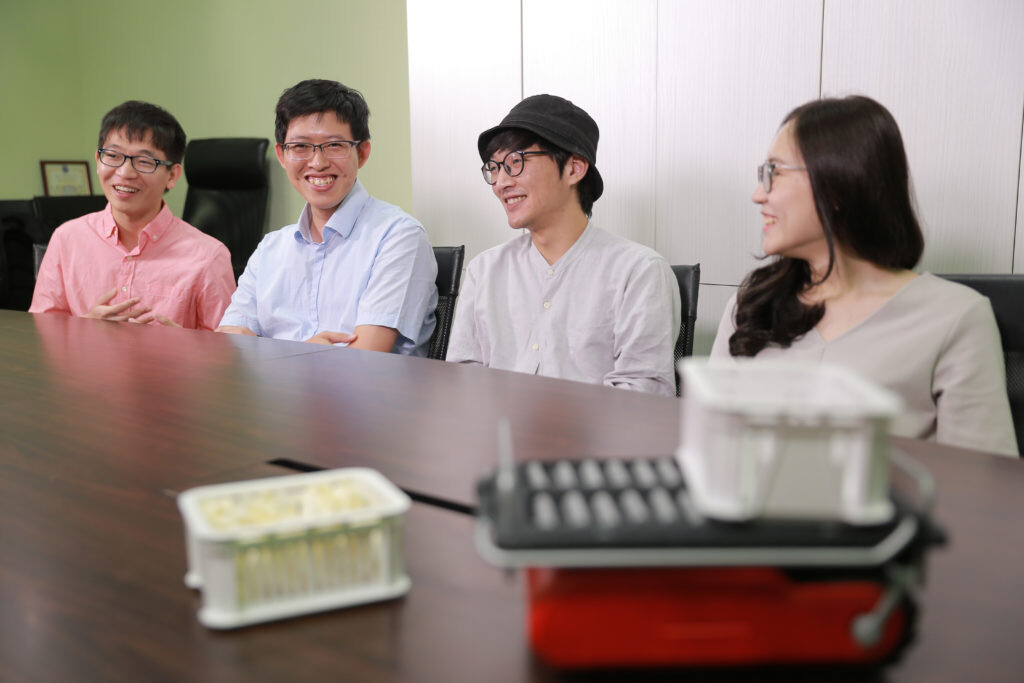
Members of the 2017 Taipei Tech team for the PBL Program
Due to the impending deadline, the Taiwanese team could only produce two semi-finished products: one is a farming machine with a beautiful appearance but requiring manual operation for every function; and the other is a prototype which can follow the farmer automatically by recognizing and tracing a given color.
Semi-finished products notwithstanding, all the students thought that they gained much from the program, which also enabled them to learn the importance of horizontal communication and coordination between different sectors in the workplace.
The performance delivered by the students in such short span of time also won the approval of the Japanese manufacturer who sponsored the program. Prof. Dong-Yea Sheu who teaches in the Mechanical Engineering Department told us that the sponsor knew how to orientate its design from the machines developed by the Taiwanese team, and manufactured a similar machine which has come into use in the field within less than a year. This proves that the program is of great benefit to the enterprise.
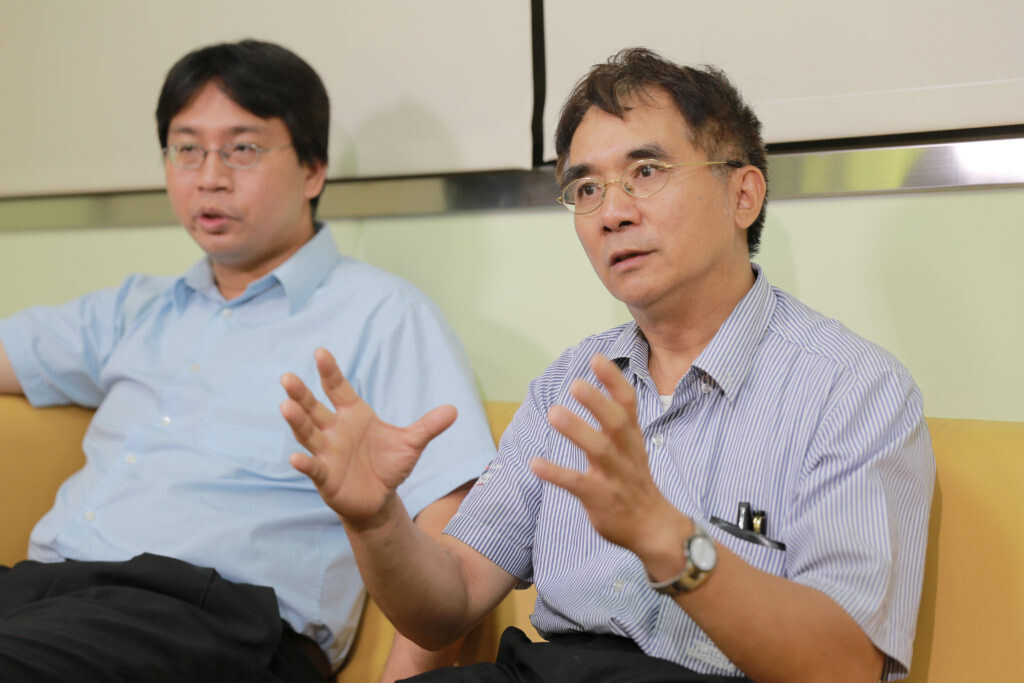
Prof. Dong-Yea Sheu, Mechanical Engineering Department, Taipei Tech (right side)
The accentuation of hands-on experience is the key advantage of Taipei Tech alumni in achieving internationalization.
According to official statistics, 10% of the owners of listed companies at the stock exchange market and those at the over-the-counter market in Taiwan are Taipei Tech alumni, including Tzu-Hsien Tung (Chairman of the Pegatron Corporation), Robert Yeh (Chairman of the EVERLIGHT Electronics), Raymond Soong (Chairman of the LiteOn Group), Paul Peng (Chairman of the AU Optronics Corporation), Shu-Hong Lin (founder of the Chang Chun Group), and Raymond Sung (Chairman of the Simplo Technology Group). The mass media even coined the term “Taipei Tech Band” to describe Taipei Tech’s influence on industries. They are integral to Taiwan’s economic achievement.
Sea-Fue Wang, the President of Taipei Tech, is also one of its outstanding alumni. After earning his MD and PhD from the United States, he returned to Taiwan and served the industry at first, and then has taught in his alma mater to date.
He believes that the strength of the century-old Taipei Tech in the industrial sector will greatly facilitate its internationalization. Its important guidelines for linking up with the world include: (1) raising international visibility; (2) following the government’s southbound policy by enhancing the academic exchange with Southeast Asian countries; and (3) improving its cooperation with the industrial sector.

Sea-Fu Wang, the President of Taipei Tech, believes that Taipei Tech’s students have rigorous hands-on training, which can be turned into their strengths in solving practical problems.
Ho-Chiao Chuang said proudly that Kookmin University was much impressed by our semi-finished product stored at OIT, and was therefore eager to be a partner for the 2018 PBL Program. As a result, Kookmin University has been included in the program. This year, the students have to tour 3 countries during the 3-month program organized according to the respective characteristics of the 3 universities.
“The program starts from Japan for it has a solid foundation in design thinking, then the students move to South Korea to develop models, because design is the relative strength of South Korea. In Taiwan, our students are good at applying theory to practice. The Taipei Tech’s geographical location offers the students easy access to the equipment and materials they need. It is a suitable arrangement to complete the assembly in Taipei.”
Ho-Chiao Chuang even gave us an advance notice that the 2019 PBL Program will include a Malaysian university, hence a transnational off-site design program among four universities.
Taipei Tech relishes new challenges. “Our students are exceptionally skilled in solving practical problems,” Sea-Fu Wang said.



